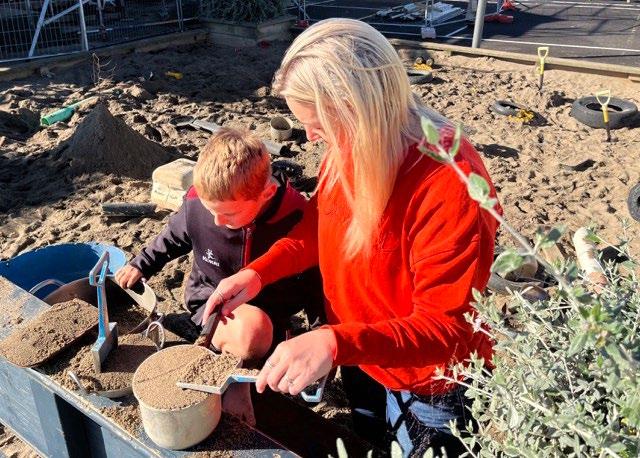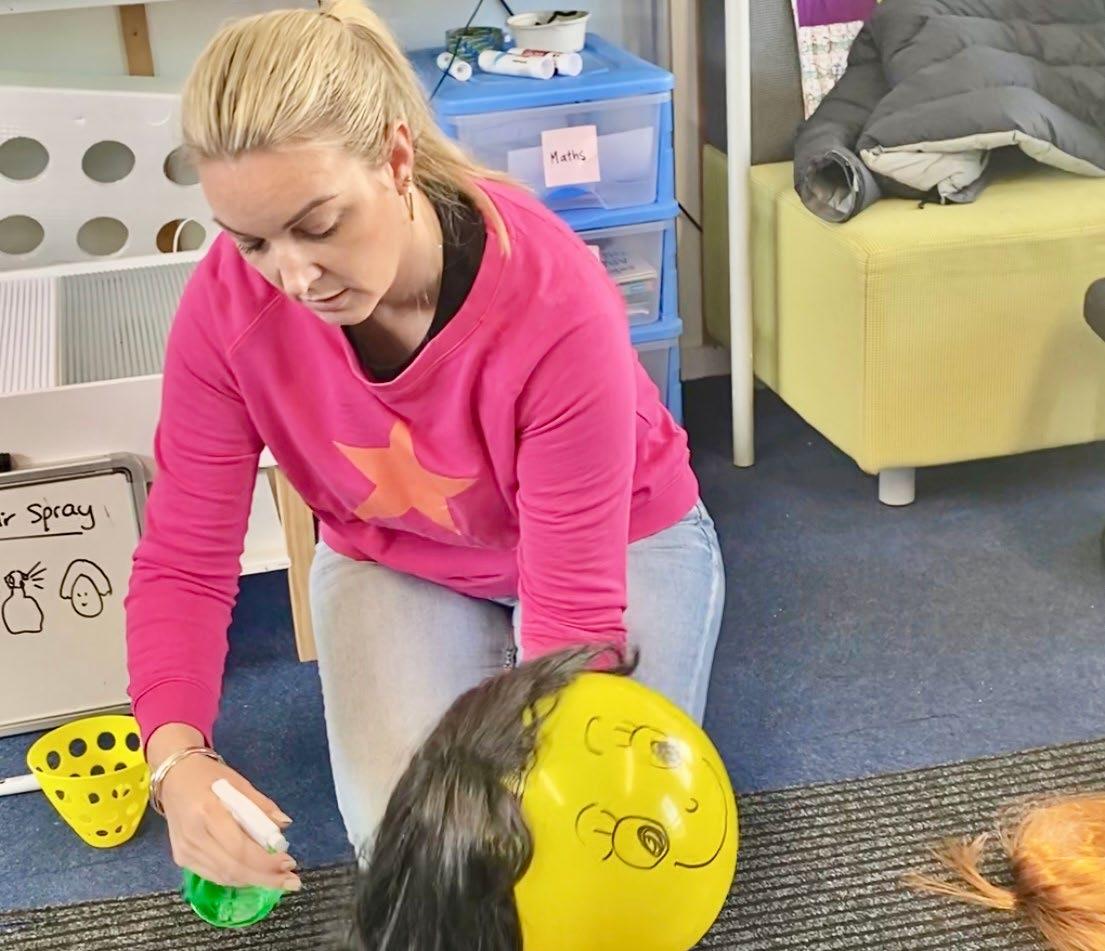
4 minute read
Championing authentic inclusion by building whānau partnerships
In Waikato, specialist teacher Stacey White is redefining what authentic inclusion looks like by putting whānau at the heart of decision-making. Through inquiry, collaboration, and a deep respect for community voice, she’s championing truly inclusive spaces where tamariki and their families feel seen, heard and empowered.
Stacey White is a SENCo and ORS specialist teacher working at Orini Combined School in rural Waikato. She is passionate about fostering genuine whānau partnerships to support inclusion.
In education, terms like inclusion, diversity and equity are often championed. But when we pause and truly reflect, we must ask: What does inclusion actually look like for those we are advocating for? Does it come with caveats? And who decides what inclusion means in practice?
Bringing support closer to home
Working in a rural, off-the-beaten-track community, Stacey used her postgraduate study in specialist teaching as an opportunity to investigate equitable access to resources for tamariki with additional needs.
Her professional inquiry research confirmed a significant gap between whānau and the support systems meant to serve them.
Stacey responded by creating a ‘one-stop shop’ within the kura, implementing new specialised approaches aligned with sensory, speech, language and communication interventions.
The support enabled whānau and kaiako to access support within school, connect with agencies and interprofessionals, build teacher knowledge and engage with inclusive practices.
Still, for Stacey, the critical question lingered: Who gets to determine what whānau and tamariki need, and how does this impact inclusion and rights? Is it the SENCo, LSC, kaiako, policies, or maybe, just maybe, it’s whānau themselves?
Listening to whānau voice
To gain a deeper understanding, Stacey embarked on a Master of Specialist Teaching degree. As part of her professional inquiry, she conducted qualitative interviews with whānau, exploring their motivations, perceptions, wishes and experiences.
Their feedback revealed what authentic partnerships look like from their perspective. Whānau feel empowered when:
Their voice and opinions count because they know their child best
There is honest, regular communication
They are being treated as equals
There is advocacy for marginalised communities
They are being consulted in decisions about their child
Together, we are strengthening community connections.
These perspectives highlighted the gap between what educators and whānau thought needed to be implemented for inclusion.

Shifting power in practice
Stacey’s insights became a foundation for change within her kura. School-wide, they moved to prioritise whānau as the primary decision-makers, particularly during IEPS and hui. Whānau start each hui by looking through photos of their child’s daily mahi and celebrating progress, connection and participation.
“Together, we identified their child’s strengths and next steps and selected who would be part of the champion support team.”
As educators, the team stepped back and listened, and by establishing strong whanaungatanga and manaakitanga, they cultivated respect, which grew trust and authentic collaboration.
The kura enhanced their teaching practices and deepened their understanding of learners through whānau insight. This shift has empowered whānau and supported tamariki more intentionally and holistically.
Stacey found that authentic partnerships are built through active listening, genuine collaboration and mutual trust. Judgement on a child can be felt as a judgement on the parent. Their child is an extension of them; therefore, when whānau feel heard and included, emotional distress decreases and a sense of control and agency is restored (Edwards & Da Fonte, 2012).
Their journey extended beyond their community. Stacey connected with colleagues across the country to explore what inclusion looks like in their kura. Collaborating with a friend, Julie Matthew, who was also completing the Master of Specialist Teaching degree, they aligned their practices with Child Rights and Educational frameworks, always centring on whānau voice.
This collaboration led to creating a podcast, Over the Teacups, in which they candidly explored shared themes: Rights of the Child (UNCROC), whānau perspective, successes and challenges. It became a platform to celebrate inclusion and unpack common traps and tropes in inclusive education.
Inclusion as a shared journey
For Stacey, inclusion is not about leading from the front but engaging in a dance – stepping forward and back, moving in rhythm with others. It means making room for multiple perspectives, especially those of whānau.
They move forward together by creating robust and reciprocal partnerships. Their hui, IEPS and teaching pedagogy are intentionally shaped, rooted in whānau beliefs and tamariki needs.
They fill their bus with the right people and remain open to adjusting who sits where along the journey.
Ultimately, Stacey says a culture of inclusion is built on respect, humility and connection. When they truly listen to whānau and honour their wisdom, they create spaces where every child can thrive.










